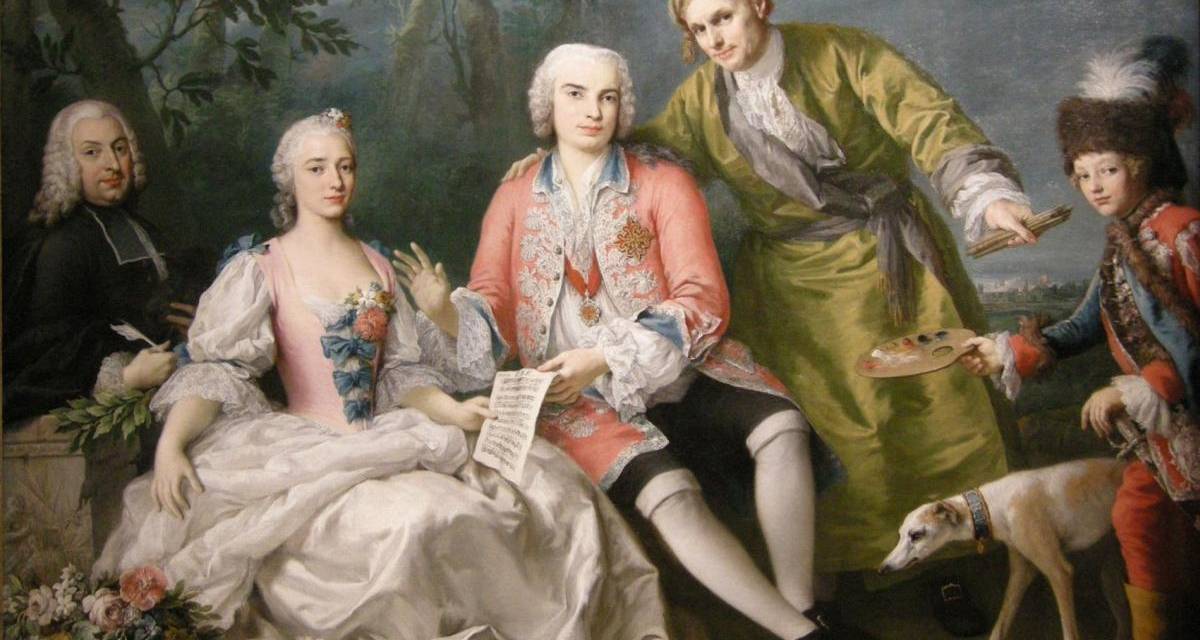The idea of castrating a prepubescent boy to preserve his voice today is – rightly – considered horribly cruel and even barbaric. Yet it has a long tradition in music and the last castrato died in 1922.
The practice in music goes back to the mid-16th century – though castration itself has a much longer history – when women were banned from performing on the stage. Higher voices were needed to play female and young roles; boys took the parts instead, but children grow up and boys’ voices break. It was very expensive to train the youngsters only for them to move on. Castration arrested this development, freezing the voice as a child’s.
As boys reach puberty, they produce testosterone which causes the larynx to descend and the thyroid to thicken, creating the Adam’s apple. Together these developments lower a man’s voice. Castration prevents the production of testosterone so the vocal chords don’t develop normally. The castrated boys retained their prepubescent vocal range into adulthood.
This lack of testosterone also meant that the castrati’s bones didn’t harden in the normal way so their limbs grew abnormally long. Their rib cages were also unusually large, giving them a huge amount of breath capacity. This, combined with the small size of their vocal chords and rigorous singing training, gave them unique voices that were extraordinarily flexible, and quite different from the equivalent adult female voice.
The operation was never legal, though, and so was generally undertaken by backstreet surgeons and dentists, while the boys’ families would make up stories as to why their sons had been castrated – often inventing implausible accidents such as being gored by wild boar. The procedure was usually undertaken between the ages of eight and nine. It was incredibly dangerous and painful – this was before the discovery of anaesthetic. However, the rewards for a successful castrato were significant and for poor families meant a way out of poverty.
Castration had its repercussions, with many castrati developing osteoporosis in later life. Their larger-than-average bones also taxed their organs. Depression was common as the castrati aged.
The practice was restricted to Italy, but the castrati sung all over Europe, touring opera houses from Madrid to Moscow and commanding fabulous fees. They were particularly popular in England and English women were known to conduct affairs with female-passing castrati. They were less welcome in France, where they were sneered at as ‘cripples’.
At the height of the craze, in the early to mid-18th century, it’s estimated that some 4,000 boys were being castrated every year; about 80% of them survived the operation. Only a handful forged successful operatic careers, though, with the rest singing in cathedral or church choirs.
Some castrati, however, achieved levels of fame equivalent to today’s popstars. Senesino, born Francesco Bernardi in October 1686, was a celebrated contralto who was castrated at the comparatively late age of 13. He is particularly remembered for his long collaboration with Handel and spent many years performing in London, commanding a salary of up to £3,000 guineas, a vast sum in the early 18th century.
Probably the most famous castrato was Farinelli. Born Carlo Maria Michelangelo Nicola Broschi in 1705, his family probably decided to operate on him as a result of his father’s death – the illegality of the procedure means that details are often lacking or even deliberately hidden.
Farinelli was revered across Europe, even being hired by Queen Elisabetta Farnese of Spain to cure the depression of the king, Philip V; this apparently worked. When he sang in London, one woman is reported to have exclaimed: “One God, one Farinelli!” According to the composer Johann Joachim Quantz, Farinelli “had a penetrating, full, rich, bright and well-modulated soprano voice. His intonation was pure, his trill beautiful, his breath control extraordinary and his throat very agile.” He is even the subject of a 1994 film, Farinelli, Il Castrato, which provides a highly fictionalised account of his life.
By the end of the 18th century the practice had started to fall out of favour, though it continued into the 19th century. In 1878, Pope Leo XIII prohibited the hiring of new castrati by the church; the official end came in 1903 when Pius X decreed that boys should take the parts of contraltos and sopranos. Economic revival in Italy also meant that poor families no longer felt the need to sacrifice their sons’ fertility in return for a successful operatic career. Additionally, as the 19th century progressed, there was an easing of the prohibition and the stigmatisation against women appearing on the stage.
The last known castrato was Alessandro Moreschi. Born in 1858, it is unknown exactly when – or why – he was castrated, but he was appointed First Soprano of the Sistine Chapel choir in 1883, a position he held for 30 years. He died aged 63 in 1922.
Recordings were made of Moreschi singing in 1902 and 1904. These still exist today, and despite technological drawbacks and Moreschi being far from his prime, provide an insight into a type of voice that has disappeared forever from the stage.
Image
Il cantante Farinelli con amici (The Singer Farinelli and Friends) by Gaetano Latilla (via Wikimedia Commons).


Truly fascinating, thank you for posting the video of Moreschi’s voice. I have been studying the topic but did not have a good appreciation of what the voice sounded like, to think he was in his 40s(?) around this time.
Drew me to tears. Fab